N similar slabs of cubical shape of edge b are lying on ground. Density of material of slab is p. Work done ot arrange them one over the other is -
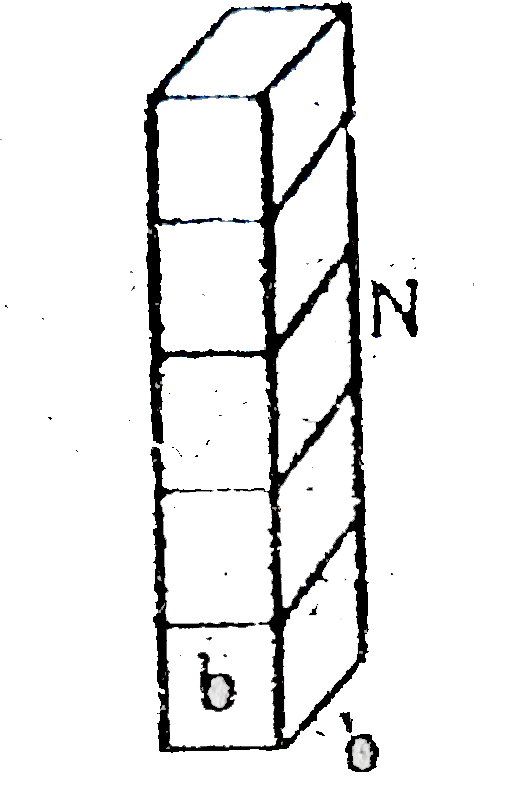
The correct Answer is:C
Step by step video, text & image solution for N similar slabs of cubical shape of edge b are lying on ground. Density of material of slab is p. Work done ot arrange them one over the other is - by Physics experts to help you in doubts & scoring excellent marks in Class 12 exams.
Topper's Solved these Questions
Similar Questions
If n number of identical cubes, each of mass m and side a lying on level ground. Find the work done in piling them one above the other.
View SolutionIdentical cubes each of mass 'm' and side T' are on the horizontal surface.Then the minimum amount of work done to arrange them one on the other is
View Solution
Knowledge Check
- Question 1 - Select One
n' identical cubes each of mass 'm' and edge 'L' are on a floor. If the cubes are to be arranged one over the other in a vertical stack, the work to be done is
ALmng(n−1)/2BLg(n−1)/mnC(n−1)/LmngDLmng/2(n−1) - Question 2 - Select One
A composite slab consists of two slabs A and B of different materials but of the same thickness placed one on top of the other. The thermal conductivities of A and B are k1 and K2 respectively. A steady temperature difference of 12∘C is maintained across the composite slab. If k1=K2/2, the temperature difference across slab A will be:
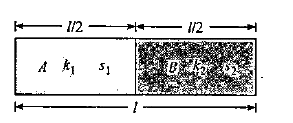 A4∘CB8∘CC12∘CD16∘C
A4∘CB8∘CC12∘CD16∘C - Question 3 - Select One
Two transparent slabs have the same thickness as shown in figure. One in made of material A of refractive index 1.5. The other is made of two materilas B and C with thickness in the ratio 1:2. The refractive index of C is 1.6. If a monochromatic parallel beam passing through the slabs has the same number of wavelengths inside both, the refractive index of B is
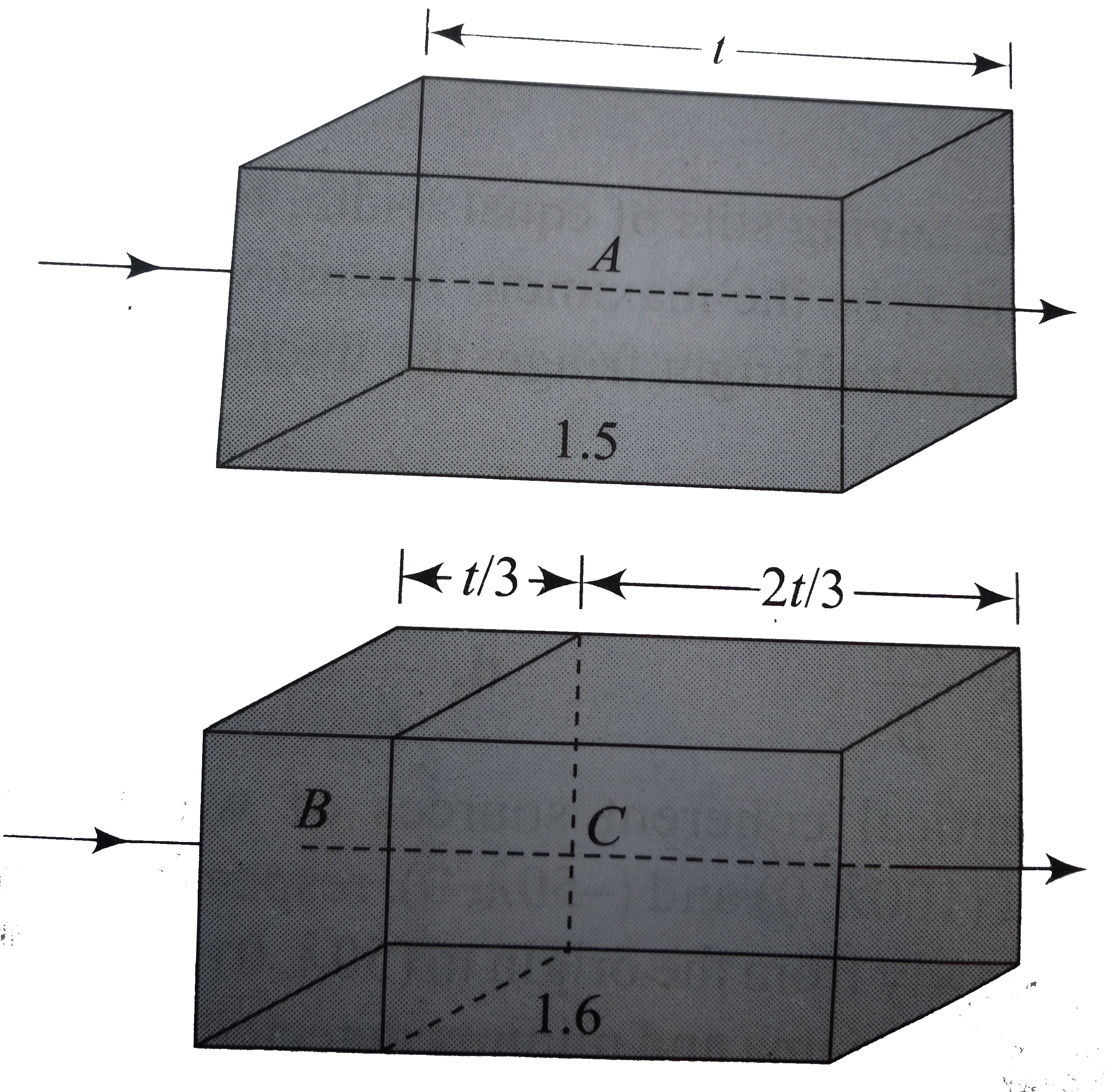 A1.1B1.2C1.3D1.4
A1.1B1.2C1.3D1.4
Two transparent slabs having equal thickness but different refractive indices μ1andμ2, are pasted side by side to form a composite slab. This slab is placed just after the double slit in a Young's experiment so that the light from one slit goes through one material and the light from the other slit goes through the other material. What should be the minimum thickness of the slab so that there is a minimum at the point P0 which is equidistant from the slits ?
View SolutionThe n transparent slabs of refractive index1.5 each having thickness 1cm, 2 cm,…to n cm are arranged one over another. A point object is seen through this combineation with near perpendicular light. If the shift of object by the combination is 1 cm, then find the value of n.
View SolutionThe figure shows two blocks of mass m1andm2 placed one above the other. These is no friction between the lower block and ground. The lower block is being pushed by a constant horizontal force F. There is sufficient friction between the blocks so that they do not slip over each other. Draw the free body diagram of the upper block in the frame of groung and in the frame of lower block. Find the work done by various forces on the upper block in the two frames as the arrangement moves through 'S'
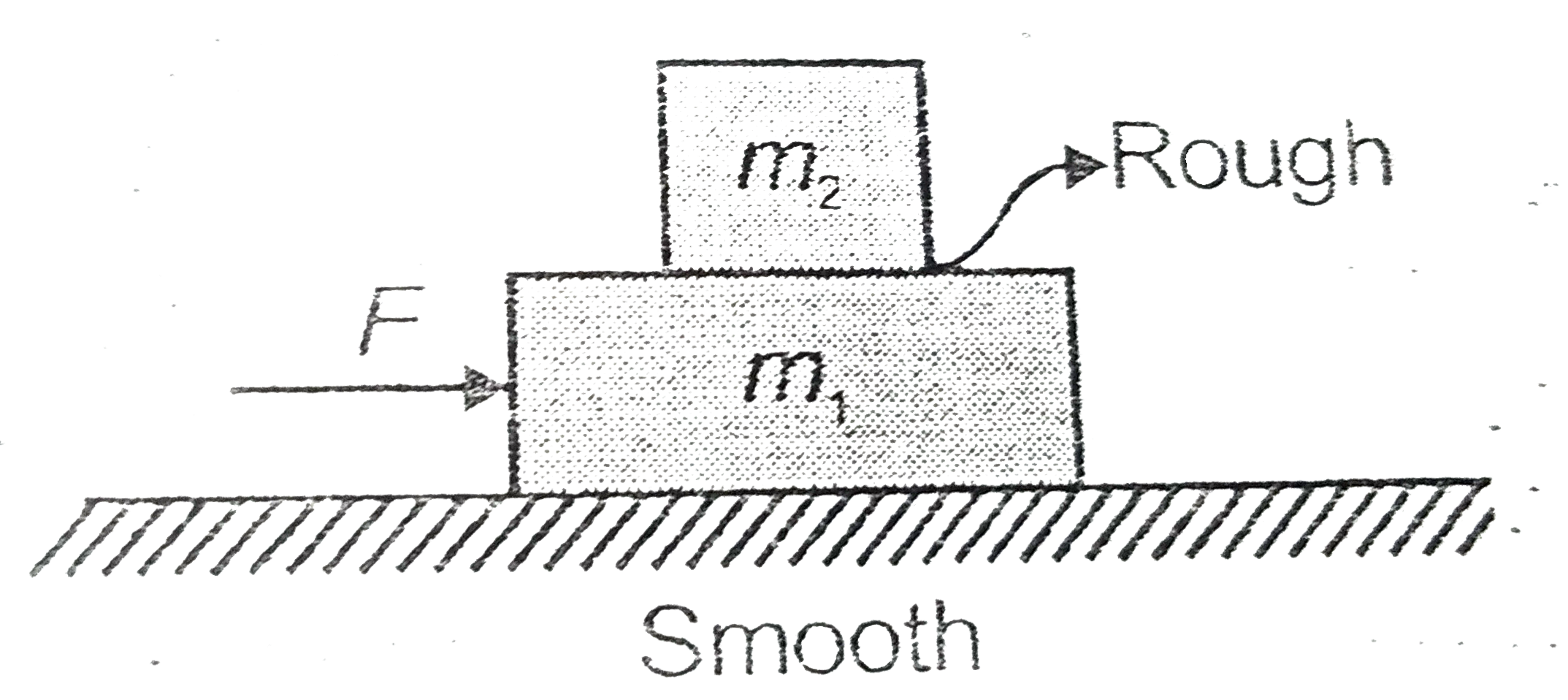 View Solution
View SolutionSelect the alternatatives.
(a) A diverging beam of light form a point source S having divergence angle α ,falls symmetrically on a glass slab as shown .the angles of incidence of the two extreme rays are equal .Fi the thickness of the glass slab is tand the refractive index nthe n the divergence angle of the emergent beam is (A) zero,(B) α(C)sin−1(1/n)(D)2sin−1(1/n)
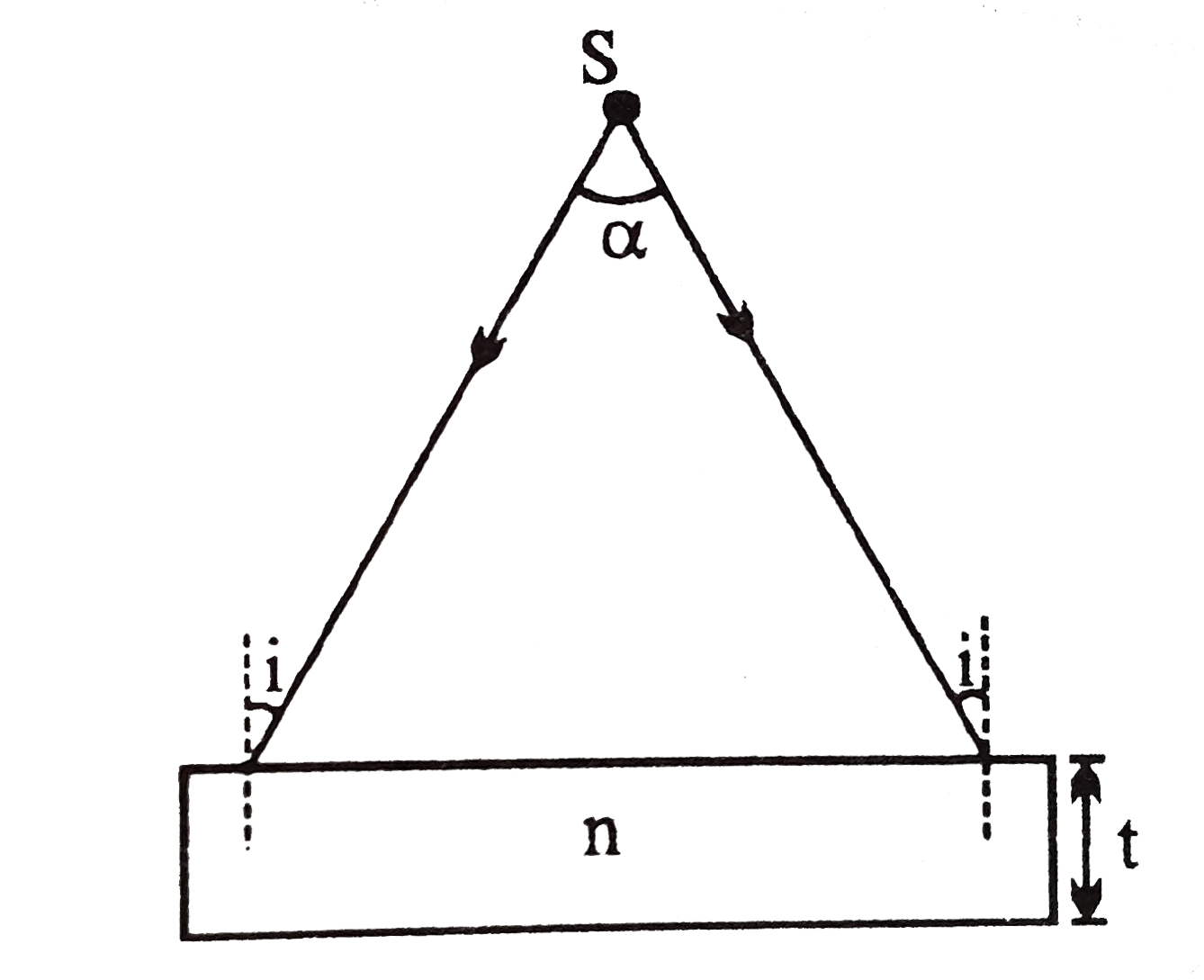
(b) Arectangular glass slab ABCDof refractive index n1 is immersed in water of refractive indexn2(n1>n2) A ray of light is incident at the surface ABof the slab as shown .The maximum value of the angle of incidenc eαmaxsuch that the ray comes out only from the other surface CDis given by
 (A) sin−1[n1n2cos(sin−1n2n1)] (B)sin−1[n1n2cos(sin−11n2)](C)sin−1(n1n2)(D)sin−1(n2n1)
(A) sin−1[n1n2cos(sin−1n2n1)] (B)sin−1[n1n2cos(sin−11n2)](C)sin−1(n1n2)(D)sin−1(n2n1)
(c) A point source of lightB is placed at a distance L inother of the centre of a mirror of width hung vertically ona wall A man walks is front of the mirror along a line parallel to the mirror at a distance 2L from it as shown .the greatest distance over which he can see the image of the light source in the mirror is (A)d/2 (B) d,(c )2d,(d)3d,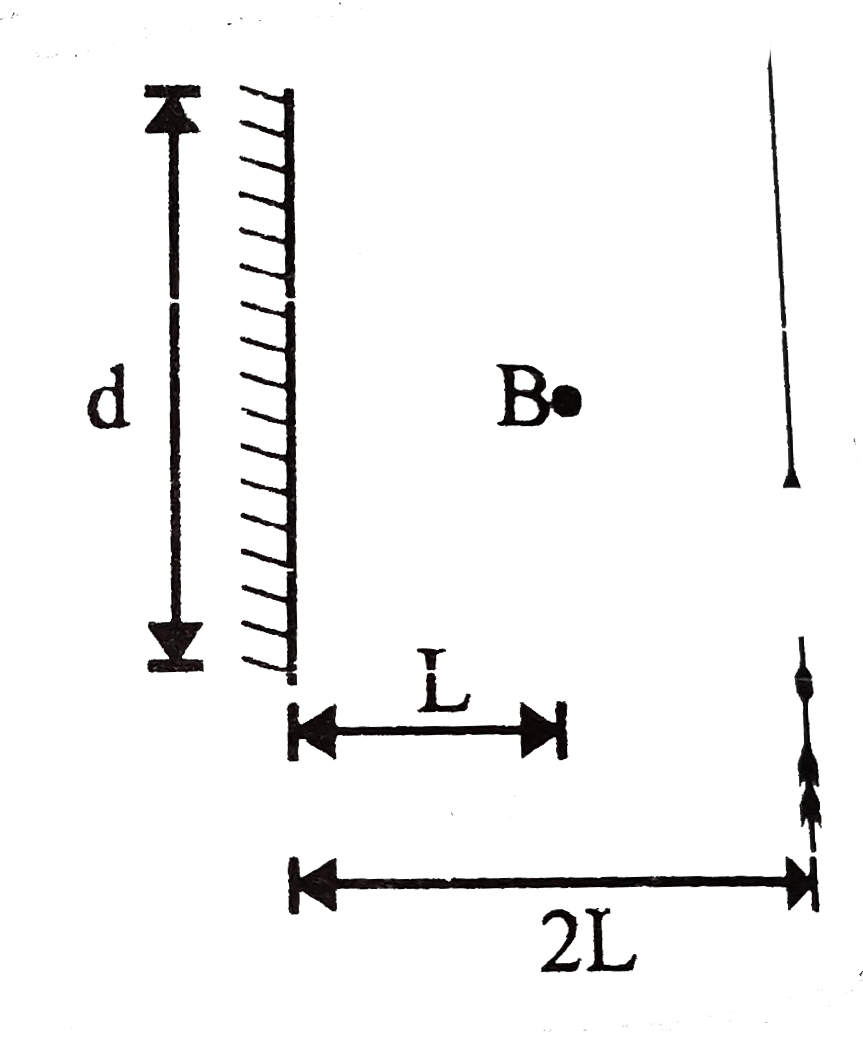 a hollow double concave lens is made of very thin transparents meterial .It can be filled with air or either of two liquids L1andL2having refractive indicesn1andn2respectively(n2>n!>1) the lens will diverge a parallel beam of light of it is filled with (A)air and placed in air.(B) air and immersed inL1(C ),L1 and immersed inL2 (D),L2 ans immersed in L1View Solution
a hollow double concave lens is made of very thin transparents meterial .It can be filled with air or either of two liquids L1andL2having refractive indicesn1andn2respectively(n2>n!>1) the lens will diverge a parallel beam of light of it is filled with (A)air and placed in air.(B) air and immersed inL1(C ),L1 and immersed inL2 (D),L2 ans immersed in L1View SolutionEight friends M, N, O, P, Q, R, S and T are sitting around a circular table with equal distance between them but not necessarily in the same order. Some of them are facing the centre with some face outside (i.e. opposite to centre). O sits second to the right of R, R faces the centre. Only two people sit between O and N (either form O's right or O's left).S sits second to the right of O.T sits to the immediate right of N. S and N face opposite direction (i.e. if N faces the centre then S faces outside and vice versa). Immediate neighbour of S face the same direction (i.e If one neighbour faces the centre then the other also faces the centre and vice-versa) Only three people sit between P and Q. Neither Nor Is an immediate neighbour of R. Q sits second to the right of M. Both T and Q face a direction opposite to that of O (i.e. if faces the centre then both T and Q faces outside and vice-versa).
Four of the following five are alike in a certain way based on the given arrangement and so form a group. Which is the one that belong to that group ?View Solution

